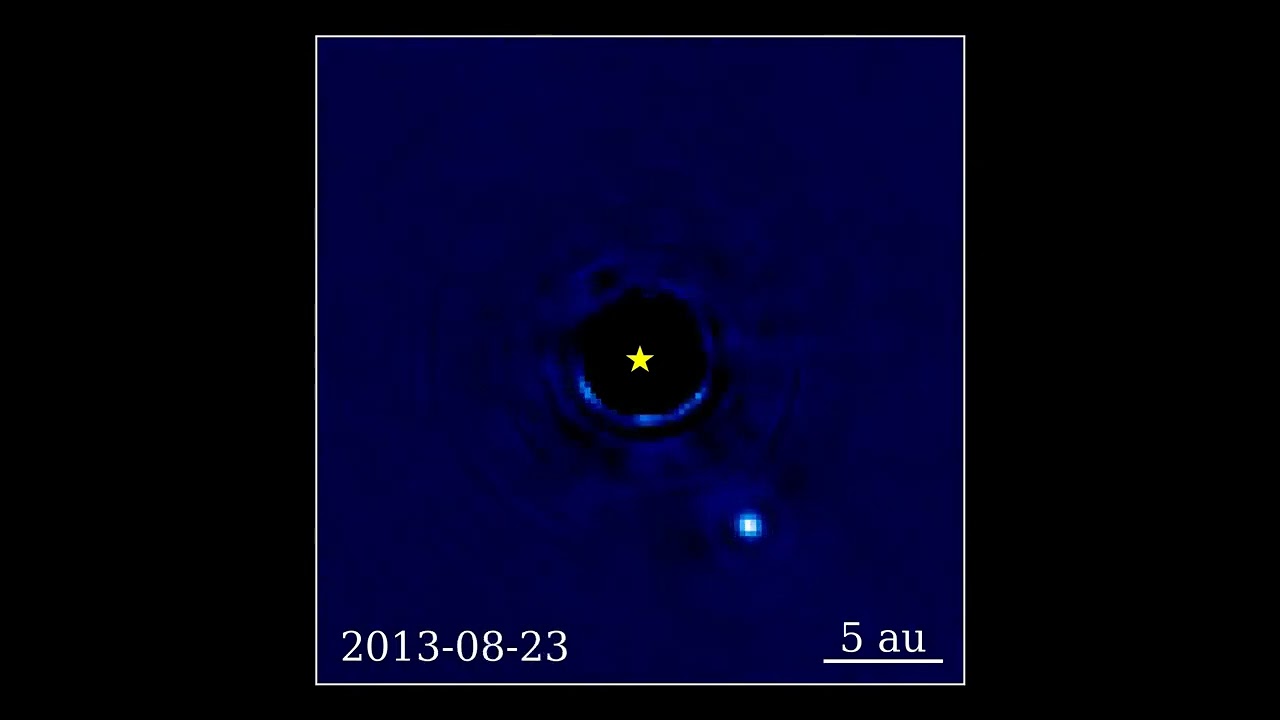Beta Pictoris is the second brightest star in the southern hemisphere constellation Pictor. It is a bright type A star with 1.75 times the Sun’s mass and 8.7 times its luminosity, located 63.4 light-years from the Sun. It is visible to the naked eye with an apparent magnitude of 3.86. The star is young, estimated to be between 20 and 26 million years old and in 1983 was found to be surrounded by a disc of dust and debris similar to that from which solar system planets formed around the young Sun.
In 2008, a planet orbiting the star was detected by direct imaging and found to be orbiting in a plane aligned with the debris disc around the star. Further observations of the planet, designated Beta Pictoris b, have determined the planet has a mass of around 11.7 times greater than Jupiter (which puts it near the boundary between a massive planet and brown dwarf), in an orbit with a semi-major axis of about 10 astronomical units (similar to Saturn in the solar system) and orbital period of 23.6 years. In 2014, observation of broadening of spectral lines in its atmosphere allowed its rotation period to be determined as 8.1 hours, making it the fastest-spinning planet ever observed (Jupiter’s rotation period is around 10 hours).
Now, a time-lapse video has been assembled from images taken of Beta Pictoris b over a 17 year period showing its orbital motion around the host star. Images have been interpolated between observations to show smooth motion. When the planet is close to the star as seen from Earth, it cannot be imaged due to the star’s glare, and its position is marked by a small × where no images exist. Six more years’ observations will be required to show one entire orbit.
Here is more about the assembly of the video.
